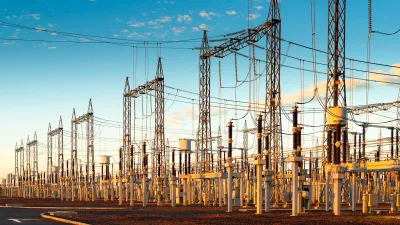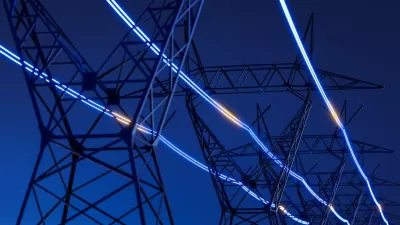Are U.S. utilities and energy infrastructure prepared for the energy demand of data centers to more than double by 2030, driven largely by increased use of AI?
As the use of AI technology grows, experts have their eyes on implications for the energy sector and electrical grid, reports Yahoo Finance. According to a 2021 study, training a large language model program like ChatGPT consumes enough energy to power 120 homes for the entire year. With the energy demands of data centers used to facilitate AI expected to nearly double by the end of this decade, from 17 gigawatts to up to 35 gigawatts a year, concerns about viability of the electrical grid, supply, and cost abound. Timothy Fox, a managing director for ClearView Energy Partners, put 35 gigawatts into perspective for Yahoo Finance interviewers:
That’s “about as much power as the state of New York consumes on the hottest day of the summer.”
“This is coming at one of the most pressing times for the grid,” Fox said, “one of the most prevalent issues facing the grid today, the power sector, is trying to ensure grid reliability at the same time it transitions to cleaner but also intermittent resources…Data centers not only facilitate AI, but they’re the backbone for our industries, for our commerce, for our transportation, for our health. These are mission critical infrastructure, so it’s going to be important that, while we’re facilitating this new industry, it’s not lights out for other industries.”
These concerns will primarily impact places with high concentrations of data centers (e.g., Virginia, California, Texas, and Arizona) and those trying to attract them. Fox says the utility companies and regulators know the demand is coming, but he didn’t delve into specific implications for infrastructure, regulations, and electricity rates.
FULL STORY: AI and the U.S. power grid: Concerns grow that the country's infrastructure is not prepared

Alabama: Trump Terminates Settlements for Black Communities Harmed By Raw Sewage
Trump deemed the landmark civil rights agreement “illegal DEI and environmental justice policy.”

Study: Maui’s Plan to Convert Vacation Rentals to Long-Term Housing Could Cause Nearly $1 Billion Economic Loss
The plan would reduce visitor accommodation by 25% resulting in 1,900 jobs lost.

Why Should We Subsidize Public Transportation?
Many public transit agencies face financial stress due to rising costs, declining fare revenue, and declining subsidies. Transit advocates must provide a strong business case for increasing public transit funding.

Wind Energy on the Rise Despite Federal Policy Reversal
The Trump administration is revoking federal support for renewable energy, but demand for new projects continues unabated.

Passengers Flock to Caltrain After Electrification
The new electric trains are running faster and more reliably, leading to strong ridership growth on the Bay Area rail system.

Texas Churches Rally Behind ‘Yes in God’s Back Yard’ Legislation
Religious leaders want the state to reduce zoning regulations to streamline leasing church-owned land to housing developers.
Urban Design for Planners 1: Software Tools
This six-course series explores essential urban design concepts using open source software and equips planners with the tools they need to participate fully in the urban design process.
Planning for Universal Design
Learn the tools for implementing Universal Design in planning regulations.
Caltrans
Smith Gee Studio
Institute for Housing and Urban Development Studies (IHS)
City of Grandview
Harvard GSD Executive Education
Toledo-Lucas County Plan Commissions
Salt Lake City
NYU Wagner Graduate School of Public Service





























